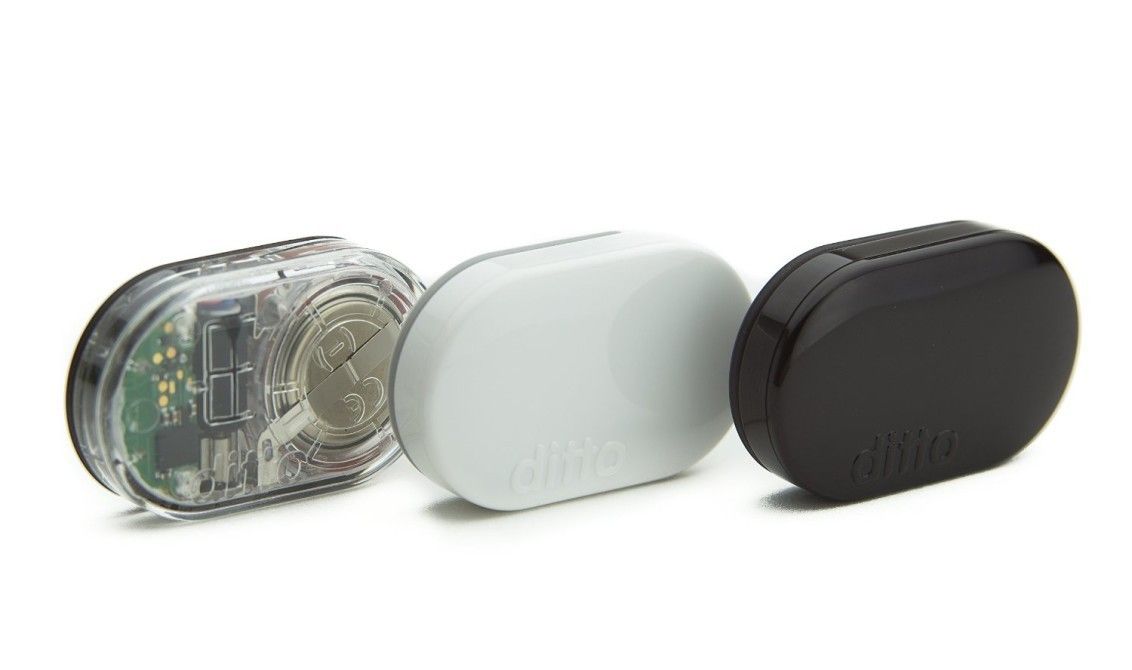Review: Ditto, A Surrogate For Your Phone
Last updated: October 12, 2016
Pros: Easy to blend in, reliable for notifying about calls and texts
Cons: Ditto's small size is easy to lose, plus the device disconnects if not very close to your smartphone
Tethered to my phone, I resent having to constantly check the device so I don't miss a key call or text. Yes, I should be able to sense a vibration or ringtone. But I live in New York City: The general din of Manhattan mutes and disables any alert from my pocket.
Hence Ditto ($39.95): a chocolate candy-sized device that clips to your clothes and acts as a surrogate for your smartphone.
Launching Ditto couldn't be more simple. After opening the box (check), I downloaded the app. I have an iPhone. But Ditto also works with Android devices. Over Bluetooth, the app paired with my iPhone 5S instantly. Battery-operated, I ran Ditto for weeks and never needed to change the watch-sized power source. Even better? I got an alert on my phone when that started to run low. (Thank you.) The gadget clips like a clothespin. Push, attach, let go.
For a tech device, Ditto is beginner-friendly. A wearable in training if you will.
I don't need to be reminded for every tweet, email or post. So I set my custom alerts for texts, phone calls and tethering (for when Ditto disconnected.) I also set vibrations for Instagram and Facebook. In terms of social media responses, I got a few. But they weren't reliable. Still, Ditto did alert me to every text and call. Sometimes when I didn't even want to know.
For example, I'm not big on texting. Some of my friends though are: preferring to send one or 12. A minute. If in a meeting, your Ditto striking a dancing beat on a lapel can be distracting. You could turn off the device at those times. But that of course defeats the purpose of a gadget meant to buzz you to attention.
Another wrinkle: Ditto needs to be close to your smartphone. Very close. If I left a room, Ditto buzzed, no longer connected. I found that irritating, rendering the device a bit unusable at times. That's less a fault however of Ditto's, and more to the workable range of Wi-Fi and Bluetooth—issues that are being addressed as IoT grows more ubiquitous.
Ditto's size, however? A win. At about one-inch long, I never felt the device stood out or called attention to itself. The company sent me a black Ditto. As that's the color of 90 percent of my wardrobe, I felt we made a perfect match. I even liked the design: the see-through plastic backing let me check out the sensors and wires. I'm a gadget kind of person: A chance to peek behind the covers of any technology is, to me, playful.
The problem? I lost it. And that's where Ditto's size was an issue. I left the gadget multiple times on my clothes, saving it only at the last minute before a potential drowning in the wash. Another time, I misplaced the button-sized gadget in my bedroom. How did I know it was in there? Because when I walked into the room, the Bluetooth finally kicked in, pairing with the device, which appeared under the bed. (I blame the dog.)
Also, I didn't find I checked my smartphone any less while using Ditto. Like Ringly, another smart wearable that alerts you to calls, emails and the like, Ditto was fun to use. But as the days went on the vibrating device was less novel and more novelty. I might still find times when Ditto has a use: during a movie or maybe a presentation (if I'm not speaking). Will I keep using Ditto? Yes, occasionally. When I can find it again.
For more ideas on wearables, check out Fitness Trackers: What You Need To Know Before You Buy
